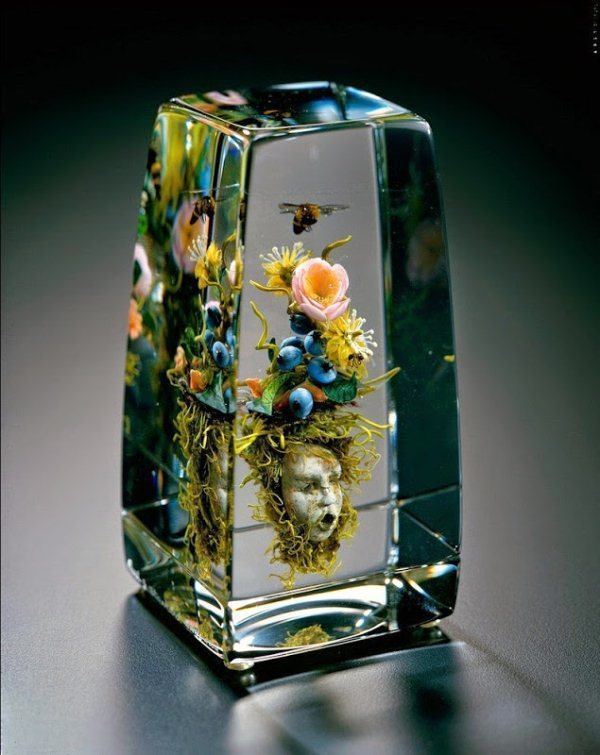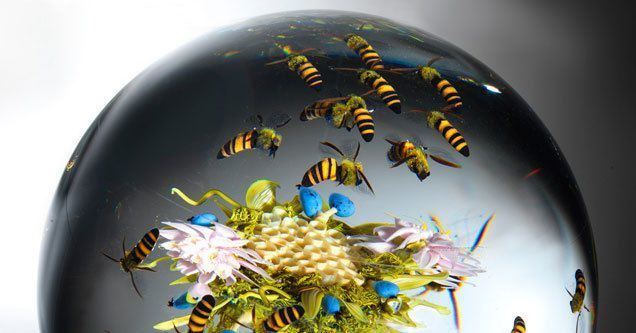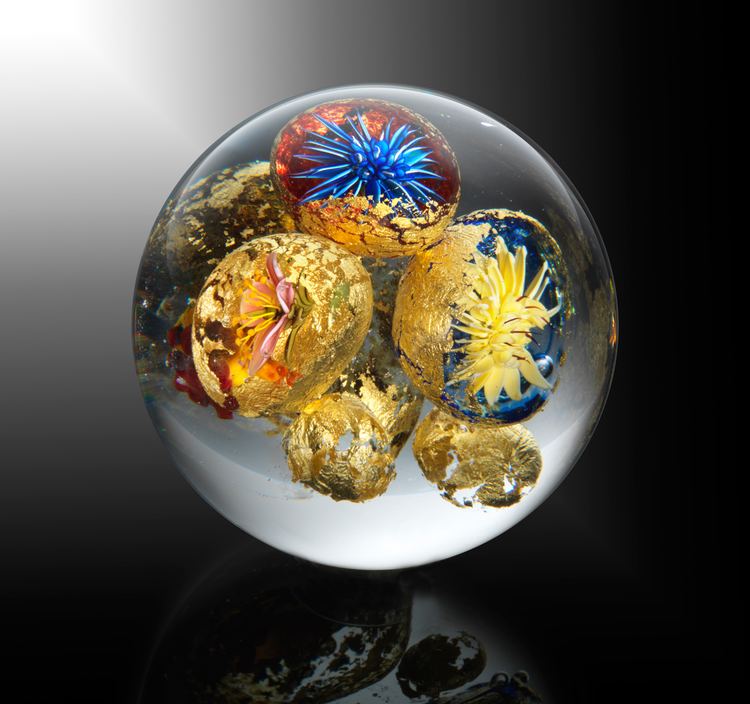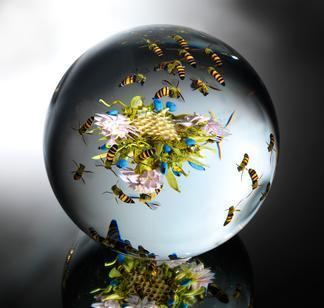Name Paul Stankard | ||
 | ||
Books No Green Berries Or Leaves: The Creative Journey of an Artist in Glass | ||
Paul Joseph Stankard, considered the father of modern glass paperweights, was born April 7, 1943 as the second of nine children in an Irish Catholic family. He lived in North Attleboro, Massachusetts in his early years. He graduated from Salem County Vocational Technical Institute (now Salem Community College) in Salem, New Jersey with a degree in Scientific Glassblowing. For the first ten years of his work career, he worked as a glassblower making scientific instruments for various chemical laboratories.

Stankard, whose driving desire was to "be on the creative side and do what he loves", started producing glass paperweights in his garage while working in the industry to support his growing family. It was when Stankard displayed his early paperweights at a craft exhibit on the boardwalk of Atlantic City, New Jersey that Reese Palley, an internationally respected art dealer, saw his work and sponsored Stankard financially to move full-time into making glass art.

In the early 1960s, paperweights made by other American paperweight makers showcased brightly colored "crafty" type flowers that were not botanically accurate. Stankard labored to make his glass floral designs look more natural and botanically lifelike. His glass flowers were so real looking that many people mistakenly thought that he had found a way to encase actual flowers in glass. Soon thereafter, paperweight makers (mostly American) were following Stankard's lead.

Stankard, who is now an internationally acclaimed artist, is largely credited with changing the status of glass paperweights from that of "craft" to that of "fine art". Among many other museums, Stankard's work is exhibited at The Smithsonian Institution in Washington, DC; the Metropolitan Museum of Art in New York, New York; the Musée des Arts Décoratifs and the Musée du Louvre in Paris, France; the Victoria & Albert Museum in London, England; The Corning Museum of Glass in Corning, New York, and WheatonArts and Cultural Center in Millville, New Jersey.

In his autobiography, Stankard chronicles his early struggles with dyslexia, which made him score poorly on tests because he couldn't read the test questions. His high school transcripts showed him graduating at the very bottom of his class with a low IQ. In the book, Stankard describes the pressure and stigma of being labeled a slow learner by an educational system that at the time was not aware of dyslexia and the steps he took to overcome his low self-esteem and learning disabilities to become one of the foremost artists of his generation.
